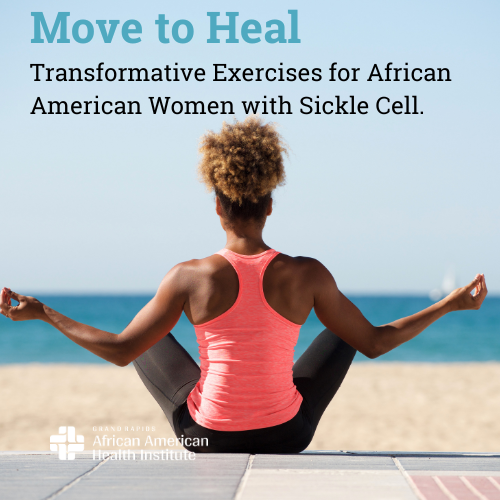Recognizing the unique physiological characteristics of African American women is crucial for crafting customized exercise programs, particularly for those managing Sickle Cell Disease (SCD). For instance, African American women, on average, possess a breast size of 168.4 cm², significantly larger than the 121.7 cm² average found in white women (Stuedal et al., 2008). A larger average breast size can lead to increased discomfort during physical activities, owing to heightened breast motion. Addressing this and other challenges necessitates the development of exercise routines that specifically aim to minimize high-impact movements and alleviate discomfort. Additionally, the challenge of finding sports bras that offer adequate support is significant is a challenge for these women, and even when such bras are available, they often come with a high price tag. Tailoring exercise strategies and support solutions to the physiological and financial realities of African American women with SCD will not only improve their comfort during physical activities but also enhance their overall care in the management of SCD.
Conventional pain management is the standard care approach in sickle cell disease. However, integrating cognitive and behavioral therapies as complementary approaches marks a significant advancement in treatment strategies. Interventions designed to bolster the capacity of women living with sickle cell disease to manage pain more effectively have been demonstrated to improve the quality of life for both children and adults (Gil et al., 1997; Thomas, Dixon, & Milligan, 1999). Moreover, the use of comprehensive treatment manuals in these therapies highlights their success and utility in clinical practice (Anie, 2005).
Given that Sickle Cell Disease (SCD) presents a range of severity levels, each necessitating a customized approach to exercise, the key to effective pain management often lies in the skillful and thoughtful integration of both physical and mental exercises, whether for mild, moderate, or severe cases. This balanced strategy will enhance the overall quality of life for these women.
Drawing on the 2020 study by Dehkordi et al., which highlighted the benefits of water-based exercises for beta-thalassemia patients—a condition closely related to SCD—incorporating water aerobics into the comprehensive treatment plans for SCD patients could be highly beneficial. This inclusion, alongside traditional treatments such as blood transfusions and medication, offers a multifaceted approach that not only enhances crucial blood metrics and life quality but also bolsters social bonds and mitigates depression. Customizing this strategy for SCD patients means adopting water exercises performed at waist depth, avoiding swimming, or submerging the head to respect cultural sensitivities. The suggested regimen recommends 40-minute sessions that begin with a 5-minute warm-up, such as pool walking, to ready the body. This leads to a 30-minute main phase of aerobic and resistance exercises, carefully selected to optimize health benefits without overburdening the body. The session wraps up with a 5-minute cooldown, involving gentle activities like walking, stretching, and simple movements to transition the body back to its resting state smoothly. This comprehensive and considerate exercise plan is specially designed to meet the unique needs of those with SCD, carefully navigating the risk of potential crises.
Building upon the comprehensive approach of water-based exercises, the endurance training program using a cycle ergometer is another customized exercise that women grappling with SCD can utilize. This moderate-intensity program, consisting of three 40-minute sessions each week, bolsters muscle strength and enhances the health of small blood vessels within the muscles, addressing issues related to the body’s blood microcirculation (Merlet et al., 2019). The exercise starts with a warm-up then progresses to a constant-load endurance exercise and concludes with a cool-down and light stretching. Safety is emphasized through careful monitoring of perceived exertion. This program carefully considers not only the physical challenges associated with SCD but also the overall well-being of individuals. Importantly, the availability of affordable cycle ergometers makes this exercise regimen financially accessible, ensuring that the cost does not become a barrier for women with SCD seeking to improve their physical health.
Yoga and low-impact aerobic exercises are another beneficial mental intervention for women with Sickle Cell Disease paralleling their effectiveness in easing symptoms akin to those observed in multiple sclerosis (Alphonsus et al., 2019). Engaging in regular yoga and low-impact aerobic routines not only helps in mitigating symptoms but also enhances both physical and mental health. This improvement potentially translates into reduced healthcare costs by minimizing the necessity for frequent therapeutic interventions and hospital admissions. Incorporating yoga and similar types of gentle exercises into a thrice-weekly schedule improves overall well-being, including reductions in fatigue and pain intensity.
The journey to alleviate the physical challenges of Sickle Cell Disease in African American women through exercise demands a customized, and comprehensive strategy. Focusing on exercise programs specifically designed for the unique physiological, cultural, and financial circumstances of these women unlocks new possibilities for health and comfort. This approach goes beyond merely addressing the direct physical symptoms of SCD; it also fosters mental strength and emotional wellness. As refinements and expansions to these exercises continue, the vision of a more manageable life with SCD through physical activity becomes ever more realistic. Therefore, these tailored exercise programs stand as beacons of hope and empowerment that can guide African American women with Sickle Cell to live a life where the disease does not hinder their ability to live fully and vibrantly.
